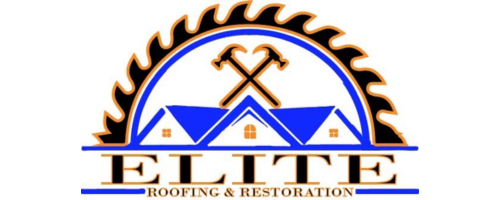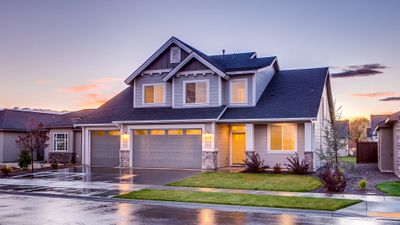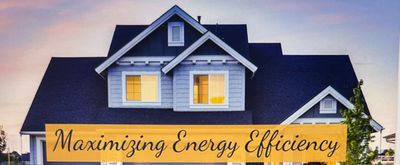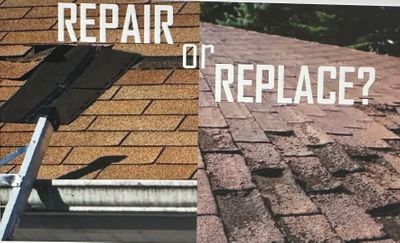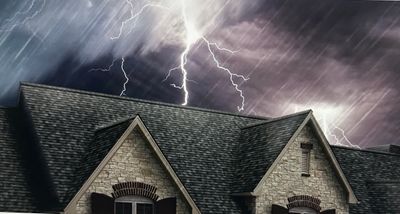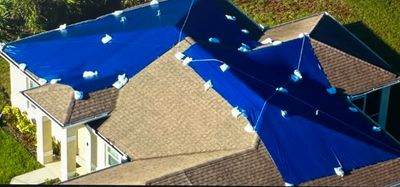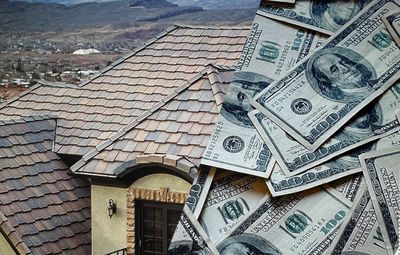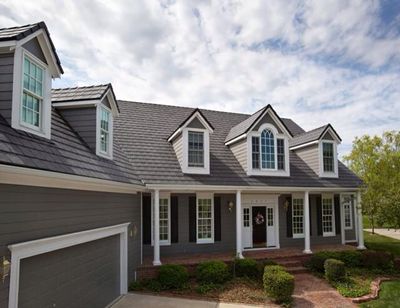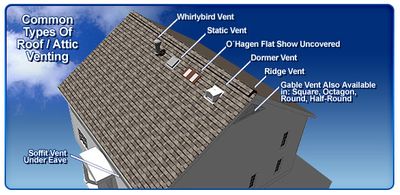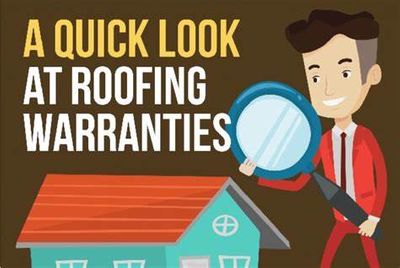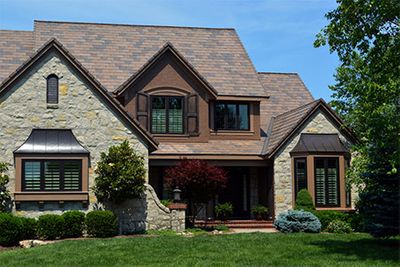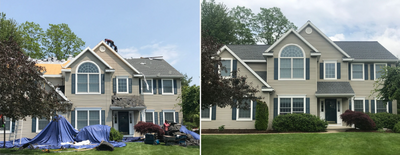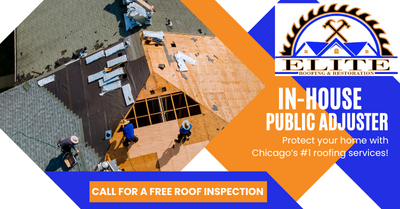blog
How Do I Get My Insurance Company to Replace My Roof?
If you’re dealing with roof damage, your first step should be securing the funds needed for repairs or replacement from your insurance company. At Elite Roofing & Restoration, we prioritize insurance claims above all else. As your local roofing contractor in the Chicagoland area, we want to ensure that you get everything you’re entitled to from your insurance policy. Don’t settle for less–let us help you navigate the claims process. Get in touch with us today!
moreEnergy Efficient Roofing and How It Saves You Money Year after Year
When it comes to home improvements, your roof is one of the most important investments you'll make, not just for protection, but for energy savings too. An energy efficient roof can significantly lower your monthly utility bills, improve your home's comfort, and even increase its resale value.
At Elite Roofing and Restoration, we know that the right roofing system isn't just about curb appeal, it's about long-term performance and savings. Here's how upgrading to an energy efficient roof can put money back in your pocket:
1.) Lower Cooling Costs
Energy efficient roofs are designed to reflect more sunlight and absorb less heat than standard roofs. This helps reduce the temperature of your attic and the rest of your home during hot summer months. With less heat entering your home, your air conditioning system doesn't have to work as hard, meaning lower electricity bills.
Cool roofing materials, like reflective shingles, tiles, or metal coating, can reduce roof surface temperatures by up to 50 degrees Fahrenheit. That could translate into a 15-30% reduction in cooling costs, especially during peak summer heat.
2.) Improved Insulation Performance
moreRoof Repair vs. Roof Replacement- How to Decide Whats Best for Your Home
Your roof is your home's first line of defense against the elements, so when problems arise, whether it's a leak, missing shingles, or storm damage, it's important to act quickly. One of the biggest questions homeowners face is: Should I repair my roof or replace it entirely?
At Elite Roofing and Restoration, we help homeowners make the right choice for their home and budget. Here's a simple guide to help you understand the pros and cons of each options and how to know which one is right for you.
When Roof Repair Makes Sense
Roof repairs are often a great solution when the damage is minor and localized. Here are some scenarios where a repair is likely the best option:
- Missing or damaged shingles in a small area
- Minor Leaks, especially around flashing or vents
- storm or wind damage that only affected a portion of the roof
- a roof that is still relatively new (under 10-15 years old)
Pros of Roof Repair:
- Lower cost compared to replacement
- Faster turnaround time
- Can extend the life of your current roof
Keep in Mind: While repairs can be cost-effective, they may not be ideal if your roof is already nearing the end of its life or has under lying issues that aren't visible on the surface.
moreHow to Protect Your Roof From Storm Damage: 7 Essential Tips
Your roof is your home's first line of defense against harsh weather, especially during storm season. High winds, heavy rain, hail, and falling debris can all cause serious damage, leading to costly repairs or even full replacements. At Elite Roofing and Restoration, we've seen is all, and we're here to help you stay ahead of the storm.
Here are 7 smart ways to protect your roof from storm damage and keep your home safe.
1. Schedule Regular Roof Inspections
Routine inspections are key to spotting minor issues before they become big problems. Look for cracked, curling, or missing shingles, loose flashing, and signs of water damage. We recommend a professional inspection at least once a year, or after any major storms.
2. Keep Gutters and Downspouts Clear
Clogged gutters cause water to back up under shingles and into your home. Clean them regularly and ensure your downspouts direct water away from your foundation.
3. Trim Nearby Trees
Overhanging branches can snap and crash onto your roof during strong winds. Keep trees well-trimmed and remove dead or weak limbs to prevent potential impact damage.
moreWhat To Do If Your Roof Is Leaking: A Step-By-Step Guide
A Leaking roof can go from minor nuisance to major problem in no time, especially during a storm. Water can cause damage to ceilings, walls, insulation, and even your electrical system. If you're dealing with an unexpected roof leak, don't panic. Here is a step-by-step guide to help you take control of the situation and protect your most valuable asset, YOUR HOME!
Step 1: Stay Calm and Prioritize Safety
Your safety comes first. If water is near electrical wiring or outlets, turn off the power in the affected area. Avoid standing water or using wet appliances.
Step 2: Contain the Leak
Use buckets, pots, or any large container to catch dripping water. Place towels or tarps on the floor to prevent water damage to your flooring. If the ceiling is bubbling, carefully poke a small hole in it to relieve pressure and allow water to drain into your container.
Step 3: Protect Your Belongings
Move furniture, electronics, rugs, and other valuable items away from the leak. If items are too heavy or cannot be moved, cover them with plastic sheeting or tarps to minimize damage.
Step 4: Locate the Source of the Leak (If Safe)
moreCommon Roofing Problems and How You Can Prevent Them
Your roof is one of the most important parts of your home, Yet it's often the most overlooked until a major issue arises. Roofing problems can lead to costly repairs, water damage, and even structural issues if not addressed early. The good news? Most common roofing problems can be prevented with regular maintenance and a few proactive steps. Let's break down the most frequent roofing issues and how you can stay ahead of them.
1. Leaks and Water Damage
The Problem: Leaks are often caused b broken shingles, cracked flashing, clogged gutters, or improper installation. Over time, water can seep through, leading to mold, mildew, and wood rot.
How to Prevent It:
- Inspect your roof twice a year(spring and fall) and after major storms
- Check for missing or damaged shingles, especially around chimneys, vents, and skylights
- Make sure gutters are clear of debris so water can drain properly
- Seal any cracks in flashing and replace worn-out materials promptly
2. Damaged or Missing Shingles
The Problem: Shingles can curl, crack, or go missing due to age, weather conditions, or improper installation. Once the shingles re compromised, your roof is vulnerable to leaks and structural damage.
moreHow Illinois Roofing Codes and Regulations Impact Your Home
If you're a homeowner in Illinois especially in the Chicagoland area you know how unpredictable the weather can be. From heavy snow and ice to summer storms and wind, your roof takes a beating. Thats why Illinois roofing codes and regulations exist, to protect your home, your investment, and your peace of mind.
Here's how these state and local rules directly impact your home and why staying up to code is more than just checking a box.
1. Ensures Safety and Withstands Harsh Midwest Weather
Illinois building codes are strict for good reason. They require roofing systems to meet minimum standards that protect your home against common weather events, like high winds, heavy snow loads, and hail. For example, Chicago building codes mandate ice and water shield installation along eaves and valleys to prevent leaks during freeze- thaw cycles.
Staying compliant with these codes ensures your roof is built to last in our local climate.
2. Protects You During Insurance Claims
Illinois homeowners filing insurance claims for storm damage often find that insurance companies will not cover repairs or replacements if the original roof wasn't up to code. That's a major risk, especially in areas like Cook, DuPage, and Lake Counties, where storm activity can be intense. Working with a licensed, code-compliant roofing company ensures your claim isn't jeopardized.
moreThe Future of Roofing: Smart and Self Repairing Roofs
The roofing industry is undergoing a major transformation, driven by rapid advancement in technology and materials. As we look to the future, two innovations stand out as game changers: Smart roofs and self-repairing roofing materials. These breakthroughs promise to revolutionize how we think about durability, efficiency, and home protection.
What Are Smart Roofs?
Smart roofs are integrated with advanced sensors, energy- efficient systems, and real-time monitoring technologies. Think of them like a "smartwatch" for your home, always on, always monitoring, always optimizing. Here's what they can do:
- Monitor roof health, in real time with embedded sensors that detect leak, damage or structural stress.
- Regulate temperature, with reflective coatings and smart ventilation to reduce energy costs.
- Harness solar energy, with built -in solar panels or solar shingles that generate power for the home.
- Communicate with smart home systems, sending alerts directly to homeowners or roofing professionals when issues are detected.
The Rise of Self- Repairing Roofs
moreThe ROI of a New Roof: Is It Worth the Investment?
When it comes to home improvement projects, a new roof might not seem as glamorous as a kitchen remodel or a new deck, but when it comes to return on investment (ROI), it's one of the smartest upgrades you can make. Whether you're planning to sell your home or simply want to protect and improve your property, here's why investing in a new roof is a decision that pays off in more ways than one.
1. Boost Your Home's Value
According to the National Association of Realtors, homeowners can expect to recover around 60%-70% of the cost of new roof when they sell their home. That means if your new roof costs $15,000, your could see a $9,000- $10,500 increase in home value. This will make your home more competitive on the market.
2. Attract More Buyers
First impressions matter. A new roof instantly boosts curb appeal and signals to potential buyers that the home is well-maintained and protected from leaks, mold, and structural damage. In fact, many buyers are willing to pay a premium for a new roof, simply to avoid the hassle and cost of replacing it themselves.
3. Lower Energy Bills
Today's roofing materials are more energy-efficient than ever. A new roof with proper insulation and ventilation can reduce heating and cooling costs, making your home more comfortable year-round. Over time, those savings add up- and that is money back in your pocket every month.
moreHop into Spring With a Solid Roof Over Your Head
As the Easter season blooms with new beginnings and warmer days, it's also a perfect time to check in on something we often take for granted, your ROOF! At Elite Roofing and Restoration, we believe every home deserves the same care and attention you put into your Easter celebrations, fresh, bright, and ready for spring.
Just like spring cleaning your roof needs some TLC too!
After months of harsh winter weather, your roof might be hiding some unwanted surprises, kind of like those eggs the kids never found in last year's hunt!;) From loose shingles to clogged gutters, spring is the ideal time to inspect your roof and tackle any issues before April showers turn into costly repairs.
Here are a few Easter- inspired roofing tips from our Elite team:
1. Don't Let Hidden Damage Be Your Easter Egg Surprise
Winter weather can leave behind damage you can't see from the ground. Schedule a professional inspection with our team to uncover any hidden issues, before they hatch into bigger problems.
2. Clear Out Those "Bunny Trails" in Your Gutters
Leaves, twigs, and debris love to nest in your gutters. Make sure water is flowing freely so your home stays protected during spring storms.
moreThe Latest Trends in Roofing Materials and Design
The roofing industry is evolving fast and homeowners are getting more involved in the design and material choices that not only protect their homes but enhance curb appeal and boost energy efficiency. At Elite Roofing and Restoration, we're always staying ahead of the curve to offer our customers the latest and greatest in roofing solutions. Whether you're considering a full replacement or just exploring your options, here are some of the top trends in roofing materials and design in 2025.
1. Sustainable and Eco-Friendly Materials
With homeowners becoming more environmentally conscious, sustainable roofing materials are in high demand. Options like recycled shingles metal roofing, and even solar tiles are gaining traction. These materials are not only long-lasting but also reduce the environmental footprint of your home.
Trending eco-friendly options:
- Recycled rubber or plastic shingles
- Cool Roofs with reflective coatings
- Living or green roofs for flat-roof buildings
2. Architectural Shingles Are Taking Over
Standard 3-tab shingles taking a back seat to architectural shingles, which offer more dimension, color, variation, and durability. These shingles mimic the look of wood shakes or slate at a fraction of cost and provide better resistance to wind and weather.
moreWhen is the Best Time to Replace Your Roof? Here's Why Timing Matters!
Your roof is your home's first line of defense against the elements, so when it starts showing signs of wear, it's crucial to act fast. Many homeowners ask the same questions, When is the best time to replace my roof? The answer depends on a few factors like weather, contractor availability, and your own schedule, but there is a sweet spot. Let's break it down!
Spring and Fall: The Ideal Roofing Seasons
While roof replacements can technically happen any time of year, spring and fall are widely considered the best seasons for roofing, and here's why:
1. Optimal Weather Conditions
Mild temperatures and consistent weather in spring (April - June) and fall (September - November) make for perfect roofing conditions. Shingles seal best when the temperature ranges between 45 degrees Fahrenheit and 85 degrees Fahrenheit. This ensures proper adhesion and long lasting protection.
2. Easier Scheduling
Spring and fall offer a balance between demand and availability. Summer is peak season for roofing companies, meaning you may wait weeks for an opening. In early spring or fall, you'll often find more flexibility with scheduling and possibly better pricing.
moreWhy Proper Attic Ventilation is Crucial for Your Roof's Health
When it comes to roof maintenance, attic ventilation probably isn't the first thing that comes to mind, but it should be. Proper attic ventilation plays a huge role in extending the life of your roof, improving energy efficiency, and preventing costly damage to your home.
Here's why attic ventilation matters and how it protects your investment.
1. Prevents Moisture Buildup- Without proper ventilation, warm moist air from daily activities like cooking, showering, and laundry can rise and get trapped in the attic. Over time, this moisture can lead to:
- Mold and Mildew growth
- Wood rot and structural damage
- Insulation deterioration
By allowing air to flow in and out of your attic, ventilation systems help keep moisture levels in check, protecting your roof and your home's interior.
2. Extends the Life of Your Roof
In summer, your attic can become hot. Without ventilation, that heat builds up and essentially bakes your roof from the inside out, accelerating shingle damage and aging. In winter, poor ventilation can lead to ice dams, where melting snow refreezes at the roof's edge, causing leaks and damage.
moreDoes a Roof Warranty Really Matter? What Homeowners Should Know
When it comes to investing in a new roof, homeowners often focus on materials, colors, and the roofing company they choose. There is another important aspect that sometimes gets overlooked - THE WARRANTY! Does a roof warranty really matter? The short answer is yes, and here's why every homeowner should pay attention.
What is a Roof Warranty?
A roof warranty is a written guarantee that protects your roof investment. There are typically two main types of warranties:
1. Manufacturer's Warranty
This covers defects in the roofing materials themselves. If your shingles fail prematurely due to a manufacturing defect, this warranty can help cover the cost of replacement materials.
2. Workmanship Warranty
This is provided by the roofing contractor and covers installation errors. Even the best materials can fail if they're not installed properly.
Why Warranties Matter
1. Peace of Mind
A Warranty gives you confidence that your roof is protected, both in terms of product quality and installation. You shouldn't have to worry about costly repairs due to issues that aren't your fault.
moreHow to Choose the Right Roofing Material for Your Home
When it comes to protecting your home, few things are as important as your roof. The right roofing material not only enhances curb appeal but also improves durability, energy efficiency, and overall home value. With so many options available, how do you choose the best one for your needs? Here's a guide to help you make an informed decision.
1. Consider Your Climate- Your location Plays a major role in determining the best roofing material for your home.
- Hot and Sunny Climates: Reflective materials like metal or clay tiles can help keep your home cool.
- Cold and Snowy Regions: Asphalt shingles or slate can handle heavy snow loads.
- Windy and Storm -Prone Areas: Impact- resistant materials such as metal or architectural shingles provide better durability.
2. Evaluate Your Budget- Roofing materials vary widely in cost. While some options may have a higher upfront investment, they could save your money in the long run through durability and energy efficiency.
- Budget- Friendly: Asphalt singles
- Mid-Range: Metal roofing
- Luxury: Slate or Clay tiles
The Best Roof Colors to Boost Curb Appeal
Your roof is one of the most noticeable features of your home, and the color you choose can significantly impact its overall curb appeal. Whether you're replacing your roof or building a new home, selecting the right roof color can enhance your home's style, increase its value, and even improve energy efficiency. Here's a guide to the best roof colors to complement different home styles and elevate curb appeal.
1. Classic Black or Charcoal Gray
Best for: Modern Contemporary, Colonial, and Traditional homes. Black and Charcoal gray roofs are timeless choices that exude sophistication. These darker shades contrast beautifully with lighter exteriors, such as white, beige, or gray, creating a sleek and modern look. They also work well on brick homes, adding depth and elegance.
Pro Tip: A black or dark gray roof absorbs more heat, so it's ideal for colder climates where extra warmth can help with energy efficiency.
2. Warm Brown and Earthy Tones
Best for: Craftsman, Cottage, Ranch, and Log Homes. Brown, tan and other earthy hues blend naturally with wood, stone, and brick exteriors, creating a warm and inviting aesthetic. These shades work especially well in rural or wooded areas, giving homes a cozy, nature- inspired appeal.
moreHow a New Roof Can Boost Your Home's Resale Value
If you're considering selling your home, you may be wondering which upgrades will provide the best return on investment. One often overlooked but highly impactful improvement is installing a new roof. While it may not be as flashy as a kitchen remodel or a bathroom upgrade, a new roof can significantly increase your home's resale value, enhance curb appeal, and attract serious buyers.
1.Higher Appraisal Value- A home's roof is a critical structural component, and appraisers take it seriously when determining property value. A new roof can increase your home's appraised worth by making it more structurally sound and up to date with current building standards. Depending on the materials used, a new roof can add thousands of dollars to your asking price.
2. Increased Curb Appeal- First impressions matter, and a worn-out roof can make a house look older and less appealing. A new roof enhances your home's overall aesthetic, making it more attractive to potential buyers. Whether you choose classic asphalt shingles, sleek metal roofing, or durable slate tiles, an updated roof can complement your home's style and improve its visual appeal.
moreHow Long Does a Roof Last? Signs You Need a Replacement
Your roof is one of the most important parts of your home, protecting you from the elements year-round. Like anything else, it won't last forever. Knowing how long your roof should last and recognizing the warning signs of deterioration can save you from costly repairs and potential damage to your home.
How Long Does a Roof Last?
The lifespan of a roof depends on the material, climate, and maintenance. Here's a general breakdown of how long different roofing materials last:
- Asphalt Shingles (3-tab): 15-20 years
- Architectural Asphalt Shingles: 25-30 years
- Metal Roofs: 40-70 years
- Clay or Concrete Tiles: 50-100 years
- Wood Shingles/shakes: 20-40 years
- Slate Roofs: 75-150 years
Proper Maintenance, regular inspections, and timely repairs can help extend the life of your roof.
Signs You Need a Roof Replacement
Even the most durable roofs will eventually need replacing. Here are some key warning signs:
1. Age of the Roof-If your roof is near the end of its expected lifespan, it's time to start planning for a replacement- even if you don't see obvious damage.
moreHow to Spot Roof Damage After a Storm: A Homeowners Guide
Severe weather can take a serious toll on your home, and your roof is the first line of defense against rain, wind, and hail. After a storm, its crucial to inspect your roof for damage to prevent costly repairs or leaks that could lead to further structural issues. How can you tell if your roof has been affected? We've put together a step by step guide to help you spot storm damage.
1. Start with a Ground-Level Inspection
Take a walk around your property and look for signs of damage from the ground. Here is what to check for:
- Missing or curled shingles- strong winds can lift or rip shingles from your roof.
- Debris on the roof- fallen tree branches or other debris may have caused impact damage.
- Clogged or damaged gutters- granules from shingles in your gutters can indicate wear and tear.
- Water stains on exterior walls- this could suggest a leak coming from the roof.
If you see any of these warning signs a detailed inspection may be necessary.
2. Some roof damage isn't visible from the outside. Head up to your attic with a flashlight and look for:
- Water stains or damp insulation- these could be signs of a leak.
- Sunlight peaking through the roof - eve small gaps could lead to major leaks over time.
- Musty Smells- This could indicate moisture buildup, which can lead to mold growth.
Spring Roof Maintenance Checklist: Preventing Leaks and Damage
Kim Passo
Spring is the perfect time to inspect and maintain your roof after harsh winter months. Snow, ice, and heavy winds can cause wear and tear, leading to potential leaks and damage if unchecked. To help homeowners protect their investment, we've put together a Spring Roof Maintenance Checklist to ensure your roof stays in top shape.
1. Inspect Your Roof for Winter Damage
Start by visually inspecting your roof from the ground. Look for missing, cracked, or curled shingles. These are signs that your roof may need repairs. If you have a metal roof, check for rust or loose panels. Use binoculars or a drone for a closer look if needed.
What to Look For:
- Missing or broken shingles
- curling or buckling shingles
- loose or damaged flashing around the chimneys and vents
- sagging areas that could indicate structural issues
2. Clean Your Gutters and Downspouts
Over the winter, leaves, twigs, and debris can accumulate in your gutters, leading to clogs. When gutters are blocked, water overflows and can seep to your roof or foundation, causing leaks and water damage.
How to Maintain Your Gutters:
more